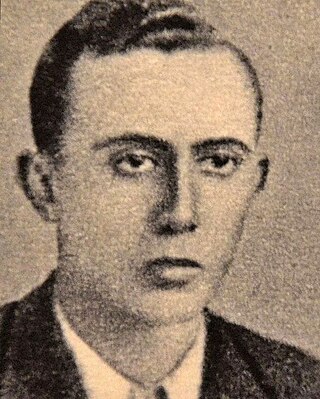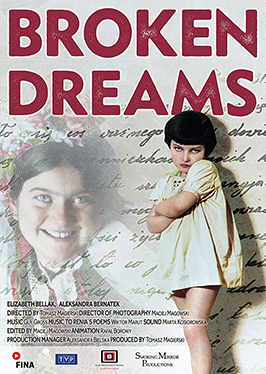
The Warsaw Ghetto was the largest of the Nazi ghettos during World War II and the Holocaust. It was established in November 1940 by the German authorities within the new General Government territory of occupied Poland. At its height, as many as 460,000 Jews were imprisoned there, in an area of 3.4 km2 (1.3 sq mi), with an average of 9.2 persons per room, barely subsisting on meager food rations. From the Warsaw Ghetto, Jews were deported to Nazi concentration camps and mass-killing centers. In the summer of 1942, at least 254,000 ghetto residents were sent to the Treblinka extermination camp during Großaktion Warschau under the guise of "resettlement in the East" over the course of the summer. The ghetto was demolished by the Germans in May 1943 after the Warsaw Ghetto Uprising had temporarily halted the deportations. The total death toll among the prisoners of the ghetto is estimated to be at least 300,000 killed by bullet or gas, combined with 92,000 victims of starvation and related diseases, the Warsaw Ghetto Uprising, and the casualties of the final destruction of the ghetto.

Adam Czerniaków was a Polish engineer and senator who was head of the Warsaw Ghetto Jewish Council (Judenrat) during World War II. He committed suicide on 23 July 1942 by swallowing a cyanide pill, a day after the commencement of mass extermination of Jews known as the Grossaktion Warsaw.

Irena Stanisława Sendler (née Krzyżanowska), also referred to as Irena Sendlerowa in Poland, nom de guerreJolanta, was a Polish humanitarian, social worker, and nurse who served in the Polish Underground Resistance during World War II in German-occupied Warsaw. From October 1943 she was head of the children's section of Żegota, the Polish Council to Aid Jews.

Szmul Mordko Zygielbojm was a Polish socialist politician, Bund trade-union activist, and member of the National Council of the Polish government-in-exile.

Hanna Krall is a Polish writer with a degree in journalism from the University of Warsaw, specializing among other subjects in the history of the Holocaust in occupied Poland.
The Holocaust has been a prominent subject of art and literature throughout the second half of the twentieth century. There is a wide range of ways–including dance, film, literature, music, and television–in which the Holocaust has been represented in the arts and popular culture.
Maria Ajzensztadt was a Polish singer, who was murdered in the Holocaust.

The Portraitist is a 2005 Polish television documentary film about the life and work of Wilhelm Brasse, the famous "photographer of Auschwitz", made for TVP1, Poland, which first aired in its "Proud to Present" series on January 1, 2006. It also premiered at the Polish Film Festival, at the West London Synagogue, in London, on March 19, 2007.

POLIN Museum of the History of Polish Jews is a museum on the site of the former Warsaw Ghetto. The Hebrew word Polin in the museum's English name means either "Poland" or "rest here" and relates to a legend about the arrival of the first Jews to Poland. Construction of the museum in designated land in Muranów, Warsaw's prewar Jewish quarter, began in 2009, following an international architectural competition won by Finnish architects Rainer Mahlamäki and Ilmari Lahdelma.
Luba Bielicka Blum was a Polish socialist activist of the Bund, and a nurse in the Warsaw Ghetto.

Izrael Chaim Wilner, nom de guerre "Arie" and "Jurek" was a Jewish resistance fighter during World War II, member of the Jewish Fighting Organization's (ŻOB) leadership, a liaison between ŻOB and the Polish Home Army, a poet, and a participant in the Warsaw Ghetto Uprising.

Vladka Meed was a member of Jewish resistance in Poland who famously smuggled dynamite into the Warsaw Ghetto, and also helped children escape out of the Ghetto.

Sławomir Grünberg is a Polish-born naturalized American documentary producer, director and cameraman.

Samuel Willenberg, nom de guerreIgo, was a Polish Holocaust survivor, artist, and writer. He was a Sonderkommando at the Treblinka extermination camp and participated in the unit's planned revolt in August 1943. While 300 escaped, about 79 were known to survive the war. Willenberg reached Warsaw where, before war's end, he took part in the Warsaw Uprising. At his death, Willenberg was the last survivor of the August 1943 Treblinka prisoners' revolt.

The Zookeeper's Wife is a 2017 American war drama film directed by Niki Caro and written by Angela Workman. It is based on Diane Ackerman's non-fiction book of the same name. The film tells the true story of how Jan and Antonina Żabiński rescued hundreds of Polish Jews from the Germans by hiding them in their Warsaw zoo during World War II. It stars Jessica Chastain, Johan Heldenbergh, Daniel Brühl and Michael McElhatton.

Rokhl Auerbakh was an Israeli writer, essayist, historian, Holocaust scholar, and Holocaust survivor. She wrote prolifically in both Polish and Yiddish, focusing on prewar Jewish cultural life and postwar Holocaust documentation and witness testimonies. She was one of the three surviving members of the covert Oyneg Shabes group led by Emanuel Ringelblum that chronicled daily life in the Warsaw Ghetto, and she initiated the excavation of the group's buried manuscripts after the war. In Israel, she directed the Department for the Collection of Witness Testimony at Yad Vashem from 1954 to 1968.

There Is Many Like Us is a 2015 documentary film directed by Josh Webber and starring Tyler Mauro, Kayleigh Gilbert, Eric Roberts, Michael Girgenti, Zach Silverman, Stefanja Orlowska, and Douglas Bierman. It is based on the true life story of Max and Rena Fronenberg.

Broken Dreams is a 2019 Polish documentary film directed by Tomasz Magierski that tells the story of Renia and Ariana Spiegel, sisters who experienced the Holocaust as children in Poland. The film was prompted by the 2012 discovery of Renia Spiegel's diary, which she kept from 1939 until her death at the age of 18 in 1942. Broken Dreams premiered on May 2, 2019, at the United Nations in New York, and on September 18, 2019, in Warsaw, Poland.

Lena Einhorn is a Swedish director and writer and former physician.
















